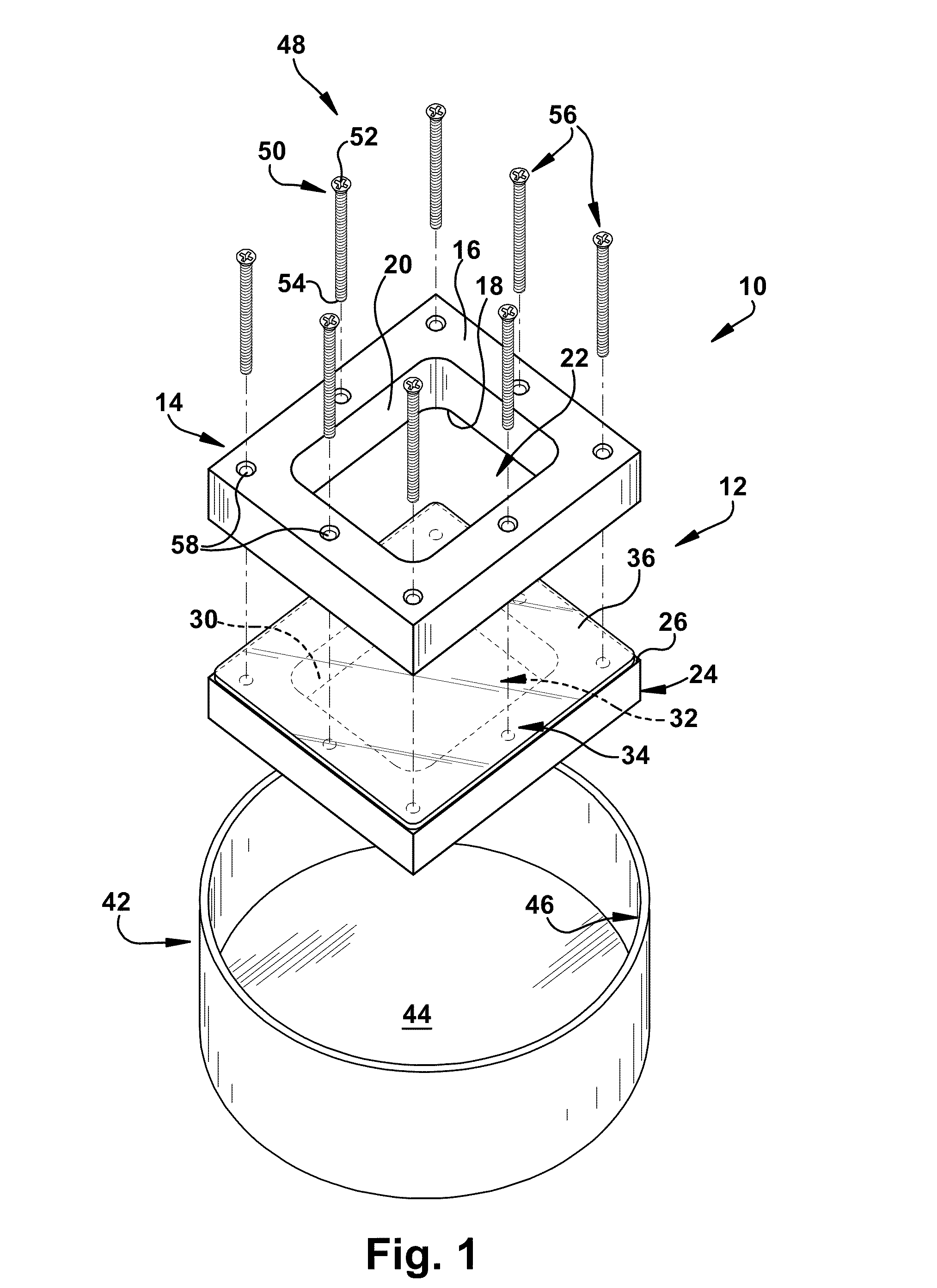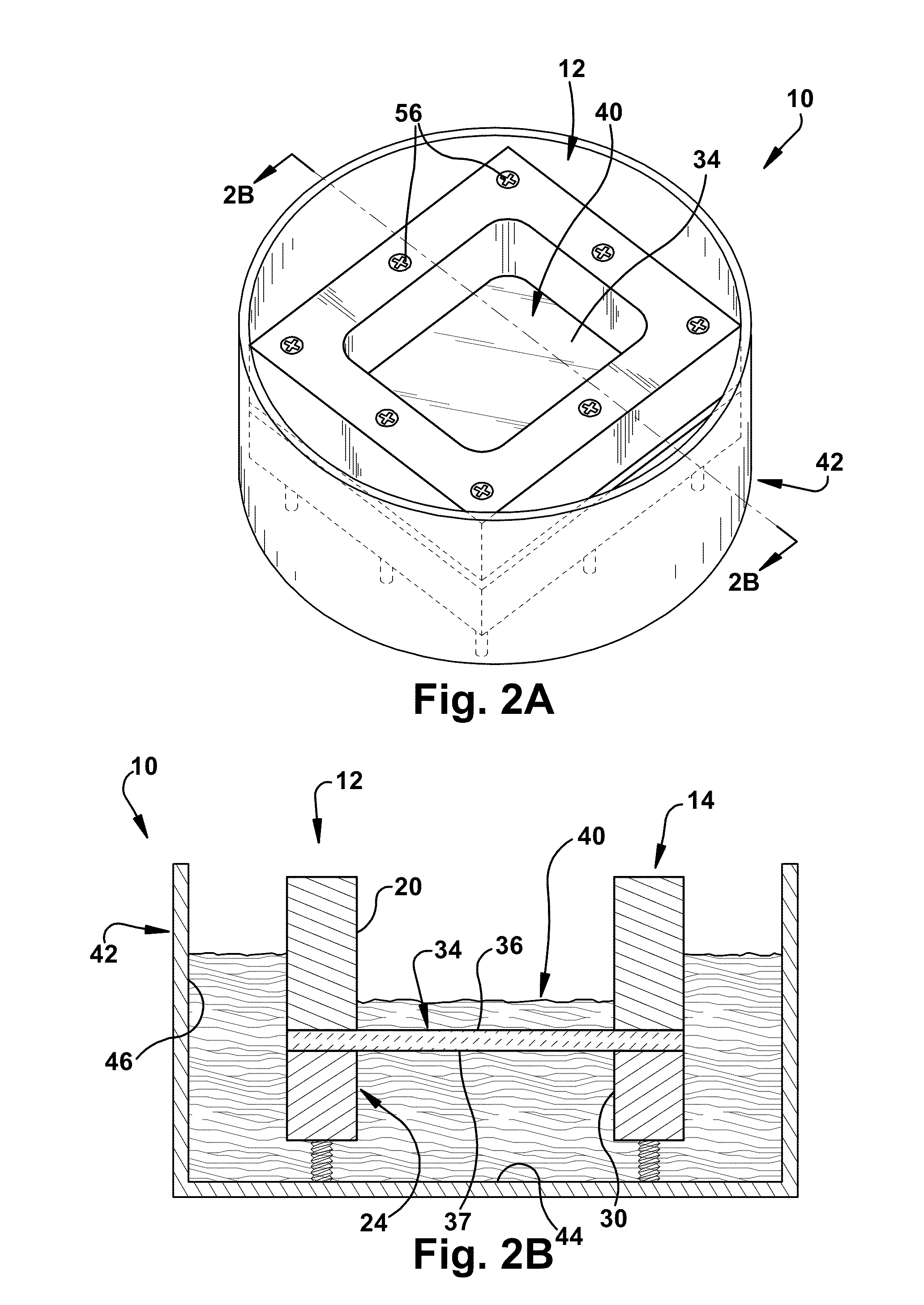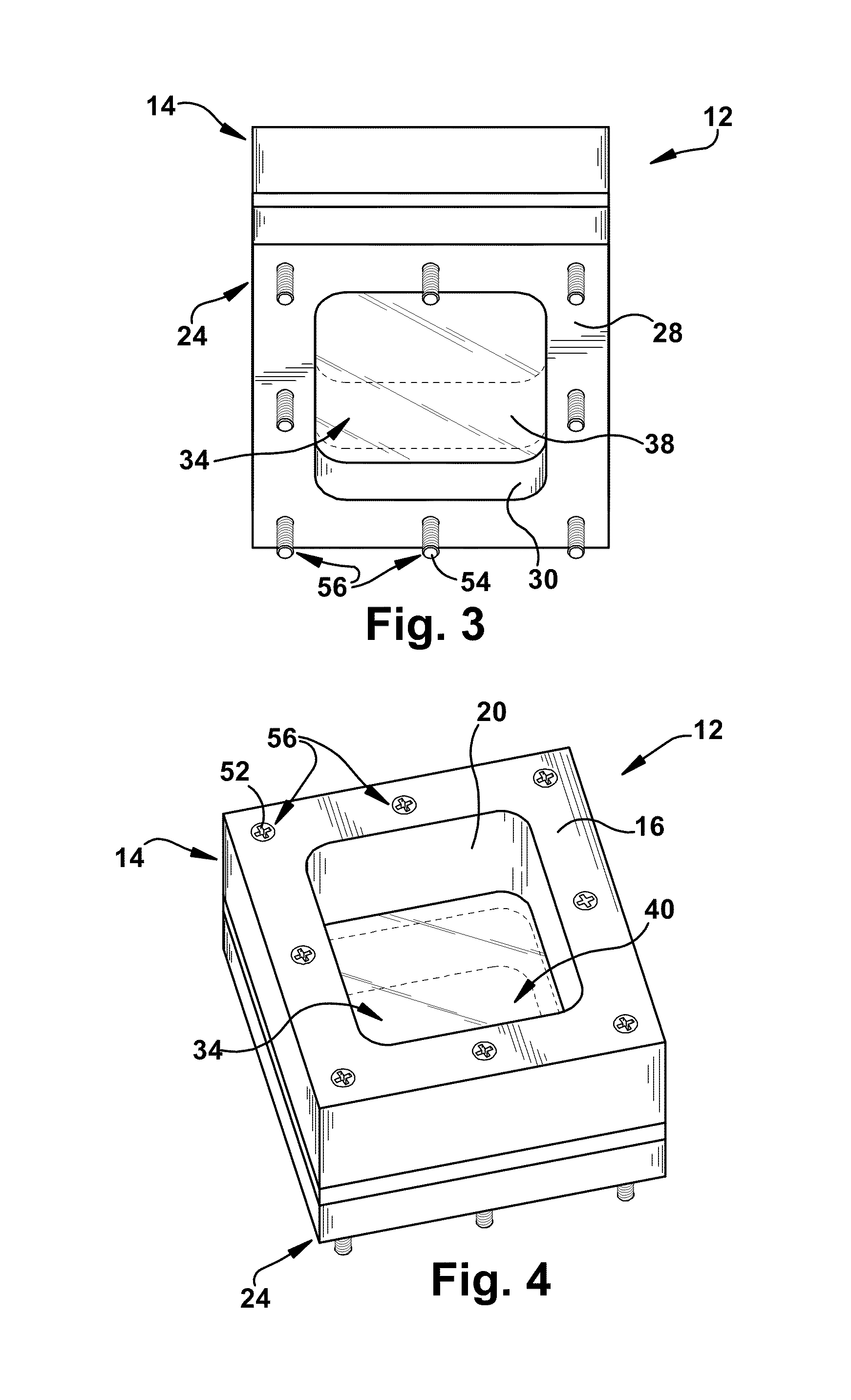Bioreactor and method for generating cartilage tissue constructs
a bioreactor and tissue technology, applied in the direction of bioreactors/fermenters, specific use of biomass after-treatment, apparatus sterilization, etc., can solve the problems of articular cartilage not having the ability to heal, affecting the mobility of joints, and causing significant pain and/or loss of joint movemen
- Summary
- Abstract
- Description
- Claims
- Application Information
AI Technical Summary
Benefits of technology
Problems solved by technology
Method used
Image
Examples
example 1
Harvesting Cartilage, Isolating and Expanding Cells
[0062]Under sterile conditions, a 1×1 cm piece of auricular cartilage is harvested from the ears of New Zealand White rabbits (ages 9-15 months). The perichondrium is removed to avoid cell contamination and the cartilage samples are diced to approximately 1 mm3 pieces. The diced cartilage is digested sequentially for 15 minutes in 0.1% testicular hyaluronidase (261 U / ml 20 min, H-3506, Sigma Chemical Co, St. Louis, Mo.), 30 minutes in 0.25% trypsin / EDTA (Invitrogen, Carlsbad, Calif.) and 24 hours in 0.1% collagenase type II (422 U / ml, 24 hrs, CLS 2, Worthington, Lakewood, N.J.). All digestions are carried out at 37° C. in a 20 ml volume on an incubated rocker at 37° C. The undigested tissue and debris are removed by filtering the cell suspension using a 70 Mm sterile Nitex filter and the cell suspension then centrifuged. The viability of the chondrocytes is assessed by Trypan Blue dye exclusion test. The isolated cells are counted, ...
example 2
Use of Bioreactor to Prepare Tissue-Engineered Trachea for Airway Reconstruction
[0068]We developed a technique to engineer scaffold free cartilage, a biocompatible, autologous neotracheal constructs in rabbits. The constructs, which were implanted up to 12 months, formed a vascularized tracheal substitute with excellent rigidity and flexibility very similar to the mechanical properties of a rabbit's native trachea.
[0069]Using a similar tracheal engineering approach, we determined neotracheal suitability and functionality for segmental tracheal reconstruction in rabbits.
Material and Methods
Cell Culture
[0070]Six New Zealand White adult male rabbits, weighing 3.0-3.5 kg and 12 to 14 months of age, were used to harvest a 5×5 mm piece of auricular cartilage under sterile conditions. The perichondrium was carefully removed to minimize potential contamination with fibroblastic cells. The cartilage was cut into approximately 1 mm3 pieces, sequentially digested and expanded in culture as pre...
example 3
Use of Bioreactor to Prepare Autologous Chondrocyte-Driven Repair of Large Bone Defects
[0077]Our laboratory has recently shown that chondrocytes grown from ear cartilage are capable of stimulating endochondral bone formation on a large scale. Furthermore, the geometry of this bone formation can be controlled utilizing a silicone template wrapped in these cartilage sheets. Based on those results, autologous ear cartilage can be used as a template to produce cylinders of bone via endochondral bone formation for the repair of large segmental skeletal defects.
[0078]Using cell culture and bioreactor methodologies already developed and described in example 1, rabbits are implanted with sheets of ear cartilage wrapped around a silicon tube template placed proximal to the femur and, once bone formation is confirmed by microCT, the vascularized flap of bone is implanted into a segmental defect and held in place with an intermedulary nail. The rabbits are then assessed for bone repair by micr...
PUM
 Login to View More
Login to View More Abstract
Description
Claims
Application Information
 Login to View More
Login to View More - R&D
- Intellectual Property
- Life Sciences
- Materials
- Tech Scout
- Unparalleled Data Quality
- Higher Quality Content
- 60% Fewer Hallucinations
Browse by: Latest US Patents, China's latest patents, Technical Efficacy Thesaurus, Application Domain, Technology Topic, Popular Technical Reports.
© 2025 PatSnap. All rights reserved.Legal|Privacy policy|Modern Slavery Act Transparency Statement|Sitemap|About US| Contact US: help@patsnap.com



